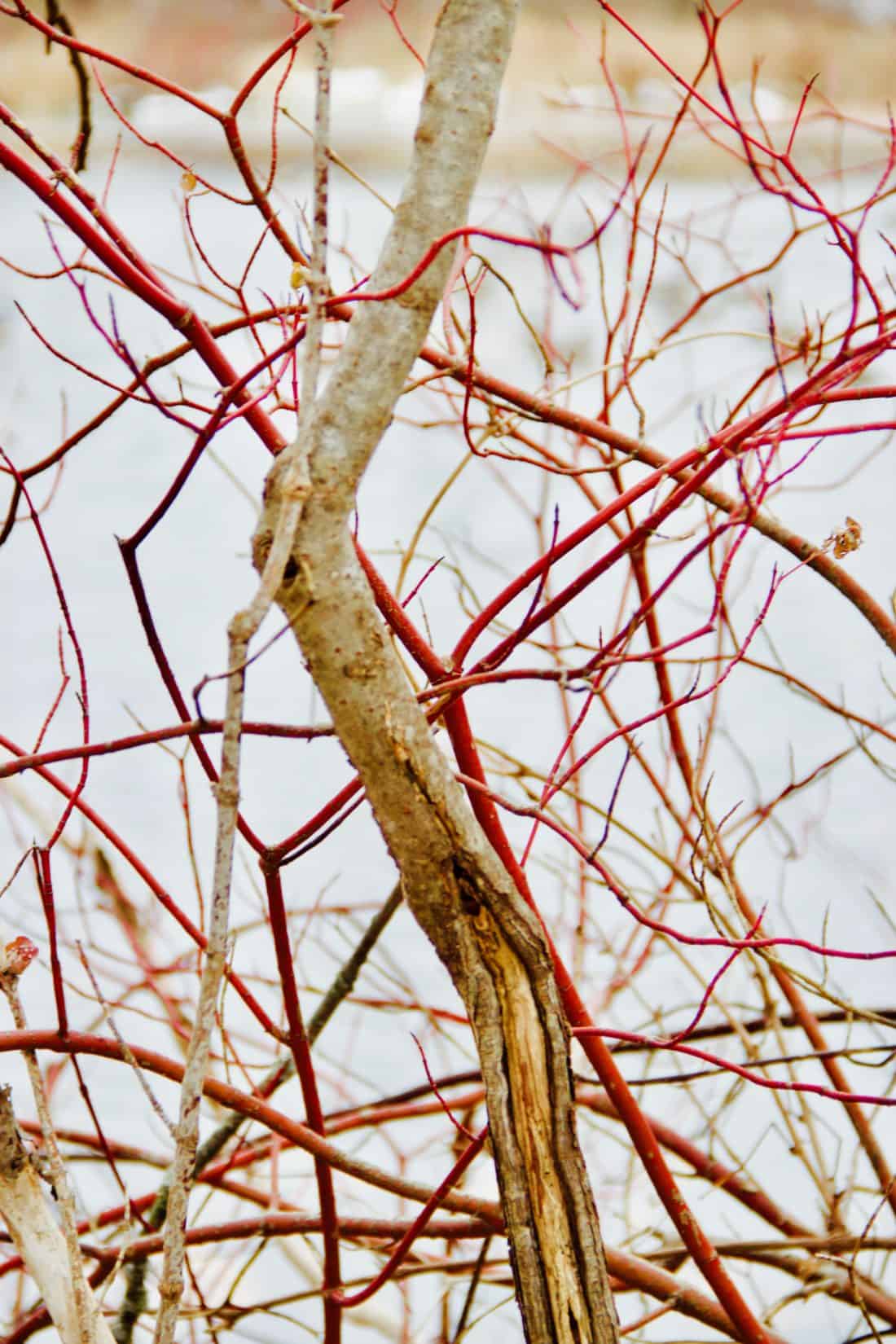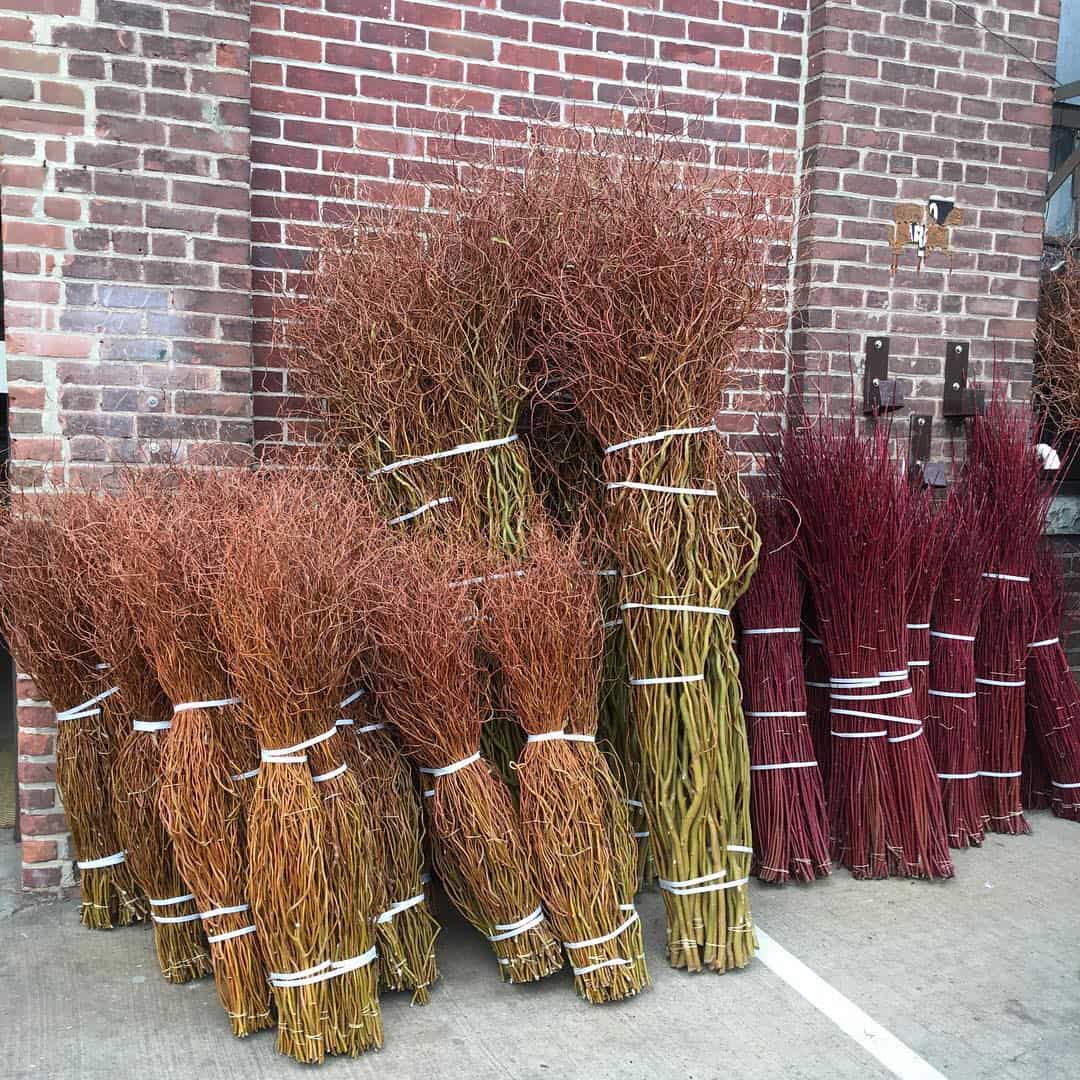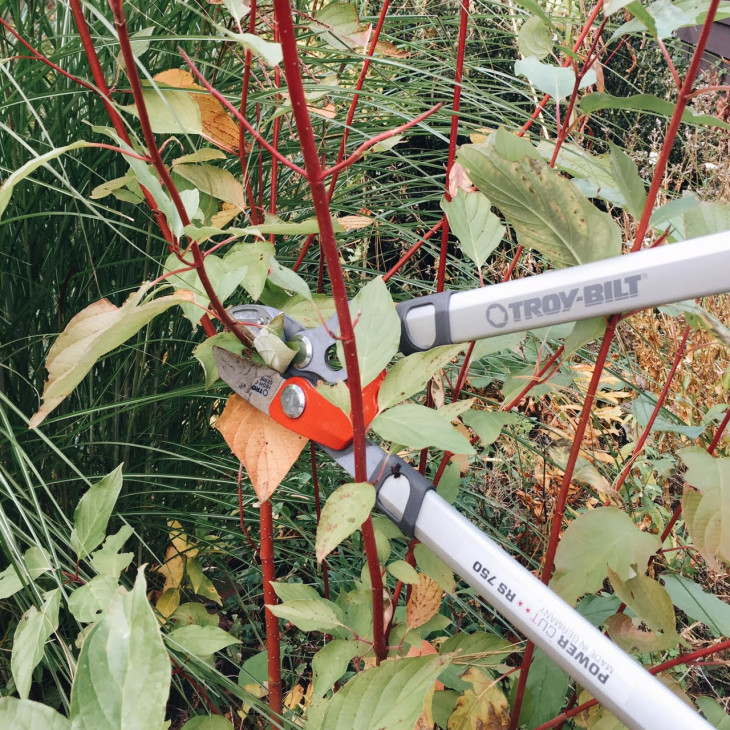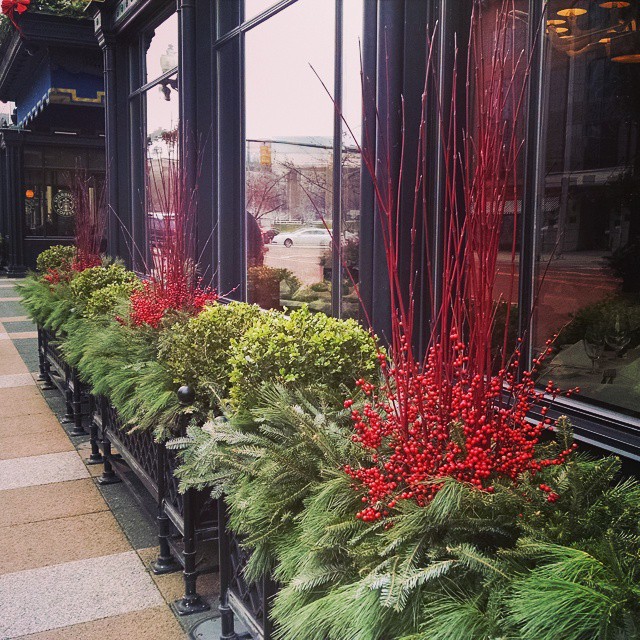Red twig dogwood (scientifically known as Cornus sericea) is a stunning deciduous and North American native shrub that can add a burst of color to any landscape. With its vibrant red bark that intensifies in the winter, this plant is a popular choice for gardeners and landscapers alike. (If you are noticing the shrubs with red branches this winter – they are likely red twig dogwood).
But there’s more to this shrub than its striking appearance – it also boasts a range of practical uses, from erosion control to wildlife habitat. Whether you’re a seasoned gardener or just starting out, read on to discover more about this versatile and attractive plant. Learn where to harvest its beautiful branches and how you can use red twig dogwood shrubs in holiday decorations as well as in your winter garden.

Why is it called Red Twig Dogwood?
The plant derives its name from the distinctive red color of its branches, particularly prominent during the winter months after the leaves have fallen. The red branches in winter is particularly eye-catching during an otherwise brown or white season, and the plant is famous for adding winter interest to the garden. The new growth branches and existing stems aren’t even red all year round – they only turn red once their leaves have fallen and temps have fallen.
Because of this – Cornus sericea is widely referred to as red twig dogwood, which accurately describes the plant’s defining feature. This shrub typically grows to a height of 6 to 9 feet, with a spread of about 8 to 12 feet. Its leaves are oval-shaped, opposite, and exhibit a deep green color during the growing season, but they also turn a vibrant red in the fall. There are also variegated leaf varieties whose stem color similarly turns red.
Red twig dogwood produces clusters of small white flowers in late spring, followed by small blue or white berries that are essential food sources for various bird species. Both of these could be more showy; the real reason you plant them is for a lovely green backdrop during the year, followed by eye-catching red stems in the winter landscape.
With its striking red twigs and adaptability to various soil conditions, this species has gained popularity in landscaping and is often cultivated for its ornamental value.

It’s late October here in New England, and the time is right to forage or harvest your garden for the beautiful red twigs of Cornus sericea. If you are wondering where all those bright red stems come from (that show up just as Halloween decor disappears) – it is red osier dogwood (common name). Latin: Cornus sericea.
Cornus sericea – the dogwood with red twigs
Red Twig dogwood branches are nature’s holiday decor. They often make wreaths, arrangements, and container decorations for the holidays.
A few of my commercially purchased stems leafed out a few years back after a mild winter with their cut stems stuffed into the soil of a holiday container. They had taken root, and once I transplanted them to my garden, they have since thrived (I subsequently have five large dogwood shrubs in my garden! – all, for free as the rooted stems of holiday decor).
Over the years since, I have learned a few tips for making the most of these shrubs when harvesting their beautiful red stems.

I’ve been working with these loppers from Troy-Bilt all season. These or something similar for pruning are great for a few reasons:
- They have nice long handles, reducing your reach – and therefore reducing the likelihood of taking a stem to the eye…(I’ve been there; eye patches, it turns out, aren’t as fun as pirates make them out to be).
- These pruners (Troy-bilt Comfort Classic Anvil Loppers) stand up to my unique style of tool torture. That is, they arrived in June and have not seen the inside of a shed since. I am a messy tool person – and these loppers have been left on the ground, in the garden, draped over a fence, or generally not put away where they are protected. I took this photo last week – and they still look and perform like new.
- Cutting with loppers is much easier than cutting with regular pruners. (given that these are woody stems). The handles give you good leverage (for easier cutting), and the anvil blade gives you a cleaner cut on a more rigid material (better for the remaining plant).

When to Harvest Winter Dogwood Stems for Holiday Floral Arrangements
Do not prune back or harvest every stem in the fall!
Taking only about 30% of the stems is best during this autumn garden harvest. The same goes for plants you might find in the woods you are cutting from – don’t take everything. You don’t want to harm the plant’s winter survival ability.
Where to find Wild Red Twig Dogwood Branches
Look for this shrub in wild areas with wet soil if you are foraging. Moist areas along river edges in full sun or partial shade are common locations to find them. A sunnier place will ensure the plant has deeper red stems. (Wild dogwood growing in the shade will likely have brown and less showy colored stems).
In early spring, you can pollard the entire plant back to the ground level. (Pollarding is to cut and pack all the stems to the main root stock coming out of the ground). This will force the shrub to put out many new stems you can harvest next fall.
If you can’t find red-twig dogwood in the wild or aren’t growing it in your garden, I’ve listed some local sources in the northern part of the USA below. (Including those where these images were sourced).
-Rochelle
How to grow and Harvest red twig dogwood – A Red Twig Dogwood FAQ
The red twig dogwood shrub is commonly found in North America and is known for its vibrant red branches – and it is a native plant found throughout the the United Staes. It typically grows in wet, swampy areas, along rivers and lakes, and in wetland margins
Red twig dogwood cuttings can be taken in the late fall or early spring.
If you are trimming so that your shrub looks great in your garden, trim in late fall or winter to early spring. This way, you can see the structure and prune out undesirable branches. If you are trimming to harvest red stems – wait for them to turn red in the fall and then cut them.
Cut red twig dogwood branches will last many months, likely from late fall to spring. If it is cold, they may freeze into the soil and root themselves over time as the soil thaws.
Branches in contact with soil or water will begin to root. Trim stems from the source and plant roots up in the ground to continue growth.
Yes, Red Twig Dogwood (Cornus sericea) can be grown in a container. Controlling the size of its rootball will, however, reduce the full growth potential. It will be a smaller shrub if left in the container long-term.
Yes, though it is better in the early spring. This way, you can also enjoy the red twigs in the garden all winter.
Red Twig Dogwood Grows Fast. You can pollard (that is, cut the entire shrub to the ground) an established shrub, and it will grow back during the growing season.
Yes, Cornus sericea (red stem dogwood) will readily root in water or moist soil.






:max_bytes(150000):strip_icc()/WinterMakeupTipSocial-60e00f1bb7e74992b3507ea26bbb0da0.png?w=1300&resize=1300,800&ssl=1)






